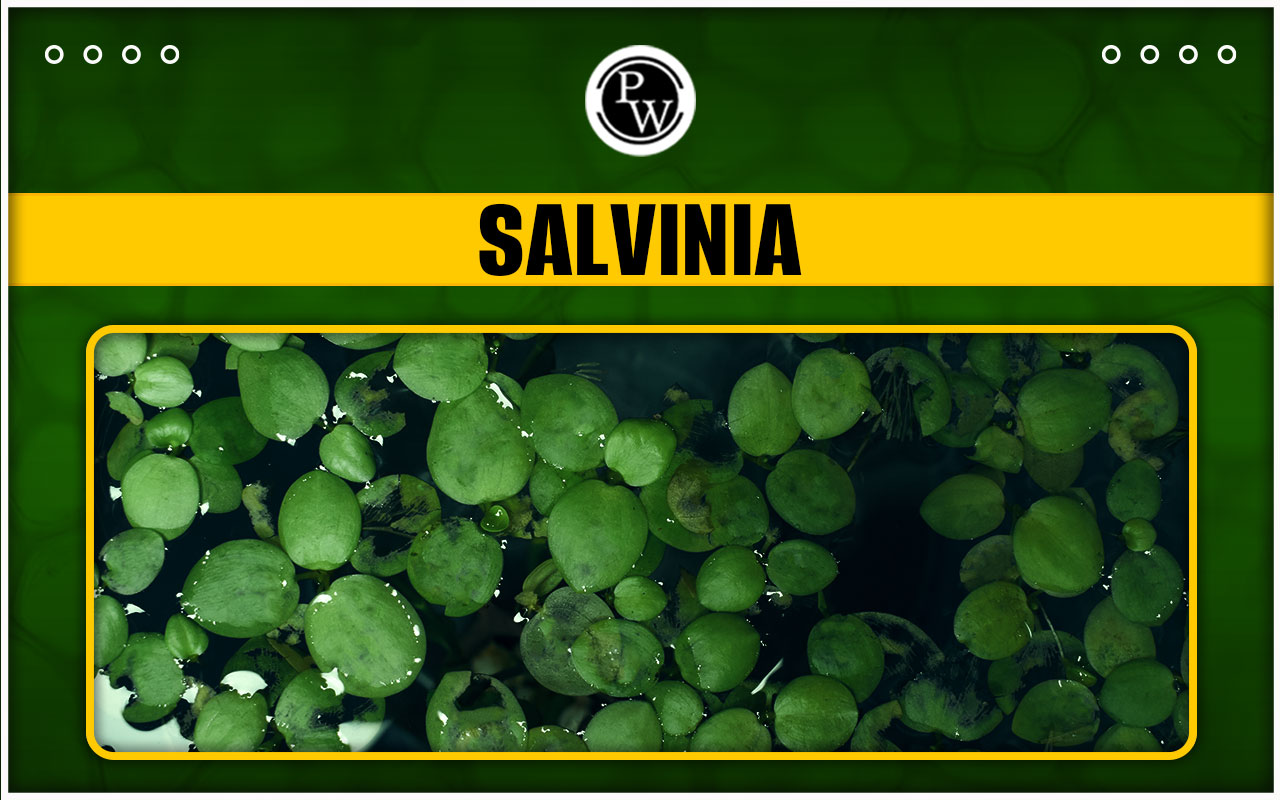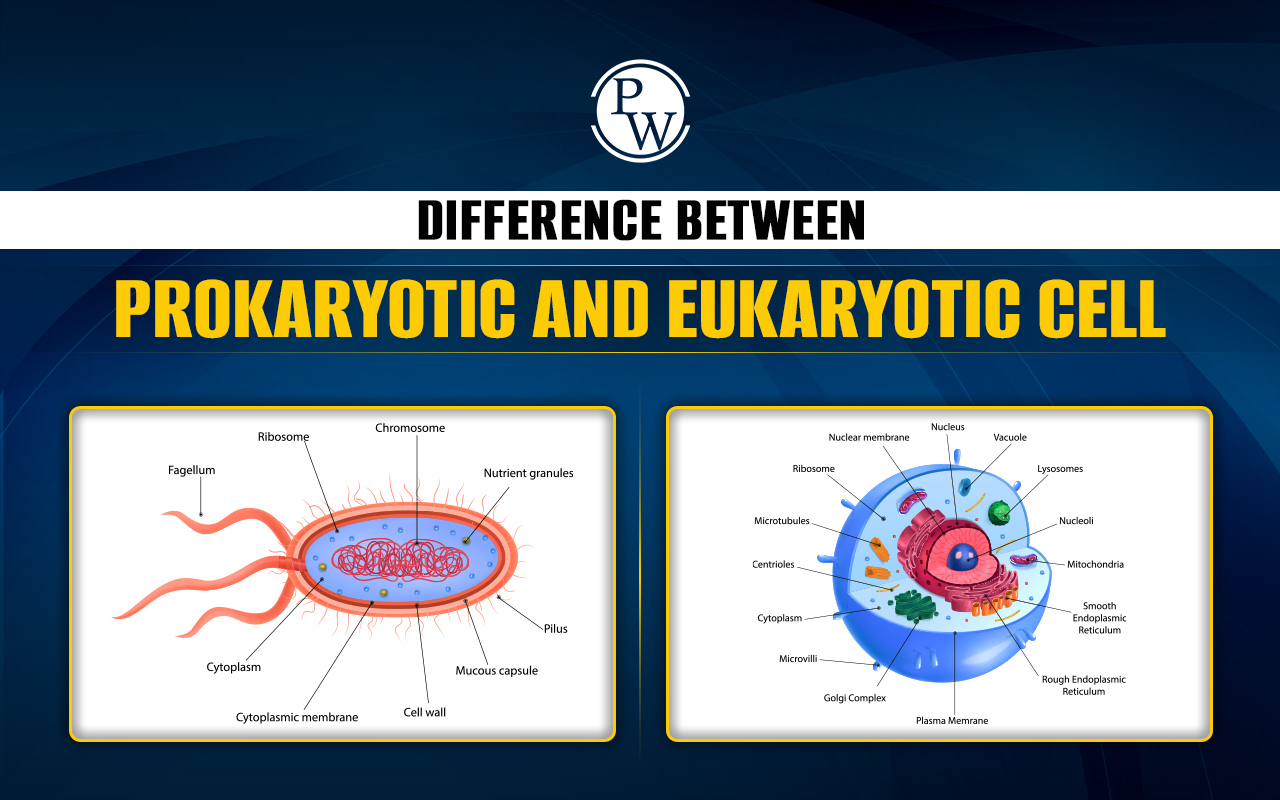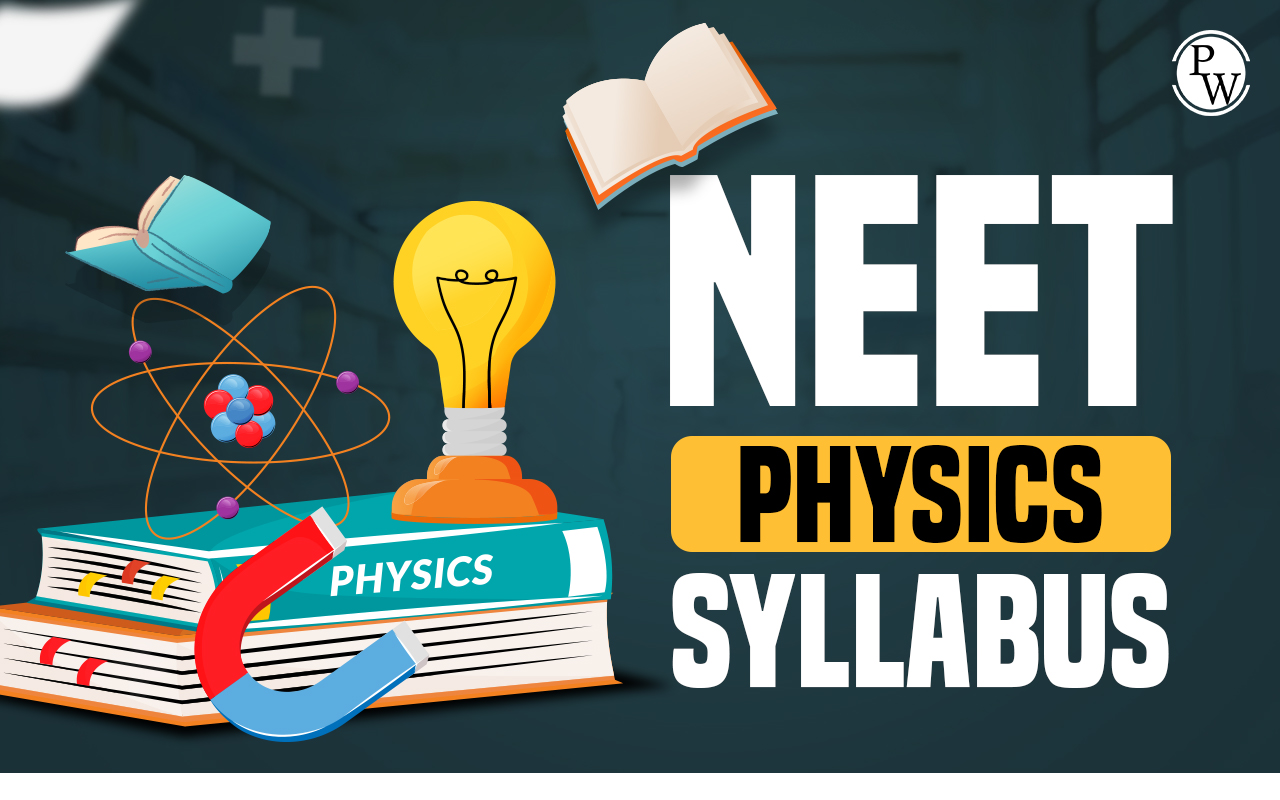
Salvinia: Salvinia, a genus in the Salviniaceae family, is commonly known as watermoss. These species are related to other water ferns like the mosquito fern, Azolla. Salvinia plants produce spores of different sizes, a characteristic known as heterospory. The stems of Salvinia are horizontally spreading rhizomes that branch dichotomously. These stems are characterized by their spongy, air-filled tissue (aerenchyma) and protostelic structure.
Salvinia leaves are simple, dimorphic, and also contain aerenchyma. When mature, the leaves are arranged in whorls of three, with the leaf blades being round to oblong in shape. The distinctive eggbeater-shaped hairs on the leaves split into four branches that unite at their tips. Detailed NEET biology notes on Salvinia are provided in the article below.Salvinia Definition
Salvinia is a genus of floating ferns in the family Salviniaceae, named after the 17th-century Italian scientist Anton Maria Salvini. Salvinia common name is "watermoss," Salvinia features small, floating aquatic plants with creeping stems. The leaves are arranged in groups of three: two green leaves that float, which are either directly attached or have short stems, and one finely divided leaf with a stem, resembling a root and hanging downwards. Salvinia is distinct among ferns because the upper surface of its floating leaf, which seems to face the stem axis, is morphologically the underside. The genus includes various species, such as Salvinia natans (floating water moss), Salvinia cucullata, and Salvinia minima (water spangles). These ferns are heterosporous, meaning they produce spores of different sizes.Salvinia Classification
Salvinia is a genus of floating ferns belonging to the family Salviniaceae. There are around 12 recognized species in this genus. The following is a classification of Salvinia:| Salvinia Classification | |
|---|---|
| Category | Details |
| Salvinia Kingdom | Plantae |
| Salvinia Phylum | Pteridophyta (Vascular plants) |
| Salvinia Class | Filicopsida (Ferns) |
| Salvinia Order | Hydropteridales (Water ferns) |
| Salvinia Family | Salviniaceae |
| Salvinia Genus | Salvinia |
Sexual Reproduction in Flowering Plants
Salvinia Habitat
There are approximately 10 species of Salvinia, all of which prefer freshwater habitats with still or slow-moving water. These habitats include lakes, ponds, canals, ditches, marshes, billabongs (oxbow lakes), and slow-moving rivers. Salvinia species thrive in warm, nutrient-rich waters and can tolerate mild salinity levels, allowing them to adapt to various aquatic environments. However, some species are considered invasive because of their rapid growth rate.Salvinia Morphology
Salvinia is a genus of aquatic ferns, often called watermoss, found in freshwater habitats worldwide. There are approximately 10 known species of Salvinia. These free-floating ferns have a distinctive structure that enables them to thrive on the water's surface.Rhizomes:
- Salvinia has slender, creeping rhizomes that grow horizontally just beneath the water's surface. These branched rhizomes serve as the main stem of the plant.
- The rhizomes are covered in aerenchyma, a tissue with air spaces that helps the plant float.
- They are protostelic, meaning they have a central vascular strand surrounded by phloem tissue.
Leaves:
- Salvinia leaves are dimorphic, meaning the plant has two distinct types of leaves.
- The upper leaves are floating leaves, typically oval-shaped with a smooth, waxy upper surface that repels water. This waxy surface is covered in short, branched hairs that trap air, aiding buoyancy and help keep the leaves clean and free of debris.
- The lower leaves are submerged leaves, much smaller and more divided than the floating leaves. These submerged leaves are responsible for nutrient uptake and have root-like hairs that absorb water and dissolved minerals from the water column.
Reproductive Structure:
- Salvinia reproduces both asexually by fragmentation and sexually by spores.
- In asexual reproduction, new plants can form when pieces of the rhizome break off and develop into new individuals.
- In sexual reproduction, spores are produced in structures called sporocarps located on the underside of the submerged leaves.
- There are two types of spores: megaspores (large spores) and microspores (small spores).
- Fertilization occurs when a microspore fertilizes a megaspore, and the resulting zygote develops into a new Salvinia plant.
| NEET Biology Notes | |||
|---|---|---|---|
| Embryo | Funaria | Selaginella | Malvaceae |
| Polyembryony | Apomixis | Pinus | Pollen Grains |
| Chara | Volvox | Endosperm | Equisetum |
Salvinia Uses
Salvinia has several potential benefits but can also be a fast-growing invasive species in certain environments. It is important to consult local authorities before introducing Salvinia to any water body. The following are some uses of Salvinia:- Ornamental Plant: Some species of Salvinia, particularly the Giant Salvinia ( Salvinia molesta ), are popular ornamental plants for aquariums and ponds due to their attractive floating fronds. They enhance the visual appeal of water bodies by adding greenery and texture.
- Mulch: Salvinia can be used as mulch around plants, especially in dry areas near water bodies where it thrives. This mulch helps retain soil moisture and suppress weed growth.
- Bioremediation: Some studies suggest that Salvinia has potential for bioremediation, which involves using natural organisms to clean polluted environments. The plant's ability to absorb nutrients and heavy metals from water makes it a suitable candidate for this purpose.
- Oil Spill Cleanup: The hair-like structures (trichomes) on the surface of Salvinia are hydrophobic, meaning they repel water but attract oil. This characteristic makes Salvinia a potential tool for cleaning up oil spills. Researchers are exploring ways to use Salvinia or materials inspired by it to develop more effective oil spill cleanup methods.
- Compost and Fertilizer: Salvinia can be composted and used as a fertilizer. It provides essential nutrients such as nitrogen, phosphorus, and potassium, which are important for plant growth.
- Livestock Feed: In some regions, Salvinia is used as livestock feed, particularly for pigs and fish. It is a good source of protein and other nutrients.
- Biogas Production: Salvinia, along with other organic materials, can be used in biogas digesters to produce biogas. Biogas is a renewable energy source that can be utilized for cooking, heating, and electricity generation. Additionally, biogas production helps reduce greenhouse gas emissions and waste disposal problems.
Salvinia Reproduction
Salvinia, a genus of aquatic ferns, reproduces both sexually and asexually, but asexual reproduction is more prevalent and crucial for its spread.Sexual Reproduction in Salvinia
Salvinia reproduces sexually by producing spores. Its life cycle alternates between two stages: the sporophyte (diploid) stage and the gametophyte (haploid) stage. Sporophyte Stage: The primary plant we observe is the sporophyte, which generates spores within specialized structures called sporangia.- Sporangia: These are often housed in specialized enclosures known as sporocarps.
- Spores: The spores are released from the sporangia and germinate to form the gametophyte generation.
| NEET Biology Notes | ||
|---|---|---|
| Plasma Membrane Structure | Pre-Fertilisation | Economic Importance of Algae |
| Slime moulds | hypotonic solution | Post fertilisation |
Asexual Reproduction in Salvinia
Asexual reproduction in Salvinia is more efficient and mainly occurs through fragmentation and budding.- Fragmentation: The plant can break into fragments, each capable of growing into a new individual. Even small pieces of the plant can grow and develop into fully functional ferns, making this method particularly effective.
- Budding: New buds form at the base of the leaves or along the stem, which then grow into new plants.
| NEET Biology Notes | |||
|---|---|---|---|
| Rhizopus | Fibrous root | Marchantia | Actinomycetes |
| Nostoc | Spirogyra | Ribosomes | Liverworts |
Salvinia Life Cycle
Salvinia, a genus of floating ferns, exhibits a fascinating life cycle characterized by both sexual and asexual reproduction. Here is an overview of its life cycle stages: 1. Gametophyte Generation- Spores and Germination: Salvinia reproduces sexually through spores. These spores are produced in sporangia located in specialized structures called sporocarps on the underside of the leaves.
- Germination: When conditions are favorable, spores germinate and develop into microscopic gametophytes. These gametophytes produce gametes (sperm and eggs).
- Gamete Formation: The gametophytes develop male structures called antheridia, which produce sperm, and female structures called archegonia, which produce eggs.
- Fertilization: Sperm released from the antheridia swim to the archegonia to fertilize the eggs, resulting in the formation of a zygote.
- Development: The fertilized egg (zygote) develops into a sporophyte, which represents the dominant phase of the Salvinia life cycle.
- Mature Sporophyte: This is the visible, free-floating plant with leaves and roots. It originates from a rhizome (a horizontal stem) from which leaves and roots emerge.
- Fragmentation : Salvinia can reproduce asexually through fragmentation. Small pieces of the plant, particularly those containing nodes, can develop into new individuals when they detach from the parent plant.
Salvinia Damage and Control
Salvinia is a rapidly growing aquatic fern that poses a significant threat as an invasive species. It spreads quickly across water surfaces, forming thick mats that block sunlight and reduce oxygen levels. This can severely harm native aquatic plants and animals, and render water bodies unsuitable for recreational activities. The damage caused by Salvinia includes:- Reduced sunlight reaching underwater plants disrupts the aquatic food chain and decreases biodiversity.
- Decreased oxygen levels in the water due to the decomposition of Salvinia, creating areas where fish and other aquatic life cannot survive.
- Impaired recreational activities such as swimming, boating, and fishing due to dense Salvinia mats.
- Creation of ideal breeding grounds for mosquitoes within the mats.
- Mechanical removal through manual labour, machinery, or specialized equipment like booms and skimmers. However, this is effective mainly for small-scale infestations and can be labour-intensive.
- Biological control involves introducing natural predators like the Salvinia weevil, which feeds on Salvinia plants and helps reduce their population.
- Chemical control using herbicides can be an option, but it should be used sparingly and as a last resort, as it may harm native flora and fauna.
| NEET Exam Important Links | |
|---|---|
| NEET Syllabus | NEET Biology Diagrams |
| NEET Biology MCQ | NEET Biology Chapter wise Weightage |
| NEET Biology Notes | NEET Previous Year Question papers |
Salvinia FAQs
Q 1. Is Salvinia a pteridophyte?
Ans. Yes, Salvinia is a type of pteridophyte that possesses vascular tissues. Pteridophytes belong to a group known as Tracheophytes, or vascular plants, which also include ferns, gymnosperms, clubmosses, horsetails, and angiosperms.
Q 2. Why is Salvinia called Sorrow of Kashmir?
Ans. Salvinia is commonly known as Watermoss. It features a floating stem with two rows of large green leaves on the upper surface and branched leaf roots underneath. This plant grows prominently in Kashmir hence it is referred to as the "Sorrow of Kashmir."
Q 3. What is the use of Salvinia?
Ans. Salvinia mats can obstruct recreational activities on lakes and waterways. Additionally, Salvinia molesta has been utilized to remove nutrients and pollutants from water. When dried, this plant serves as effective mulch.
Q 4. Are Selaginella and Salvinia heterosporous?
Ans. Yes, both Selaginella and Salvinia are heterosporous plants, meaning they produce two distinct types of spores. This characteristic is crucial in their reproduction cycle and evolutionary development towards seed formation.
🔥 Trending Blogs
Talk to a counsellorHave doubts? Our support team will be happy to assist you!

Free Learning Resources
PW Books
Notes (Class 10-12)
PW Study Materials
Notes (Class 6-9)
Ncert Solutions
Govt Exams
Class 6th to 12th Online Courses
Govt Job Exams Courses
UPSC Coaching
Defence Exam Coaching
Gate Exam Coaching
Other Exams
Know about Physics Wallah
Physics Wallah is an Indian edtech platform that provides accessible & comprehensive learning experiences to students from Class 6th to postgraduate level. We also provide extensive NCERT solutions, sample paper, NEET, JEE Mains, BITSAT previous year papers & more such resources to students. Physics Wallah also caters to over 3.5 million registered students and over 78 lakh+ Youtube subscribers with 4.8 rating on its app.
We Stand Out because
We provide students with intensive courses with India’s qualified & experienced faculties & mentors. PW strives to make the learning experience comprehensive and accessible for students of all sections of society. We believe in empowering every single student who couldn't dream of a good career in engineering and medical field earlier.
Our Key Focus Areas
Physics Wallah's main focus is to make the learning experience as economical as possible for all students. With our affordable courses like Lakshya, Udaan and Arjuna and many others, we have been able to provide a platform for lakhs of aspirants. From providing Chemistry, Maths, Physics formula to giving e-books of eminent authors like RD Sharma, RS Aggarwal and Lakhmir Singh, PW focuses on every single student's need for preparation.
What Makes Us Different
Physics Wallah strives to develop a comprehensive pedagogical structure for students, where they get a state-of-the-art learning experience with study material and resources. Apart from catering students preparing for JEE Mains and NEET, PW also provides study material for each state board like Uttar Pradesh, Bihar, and others
Copyright © 2025 Physicswallah Limited All rights reserved.












